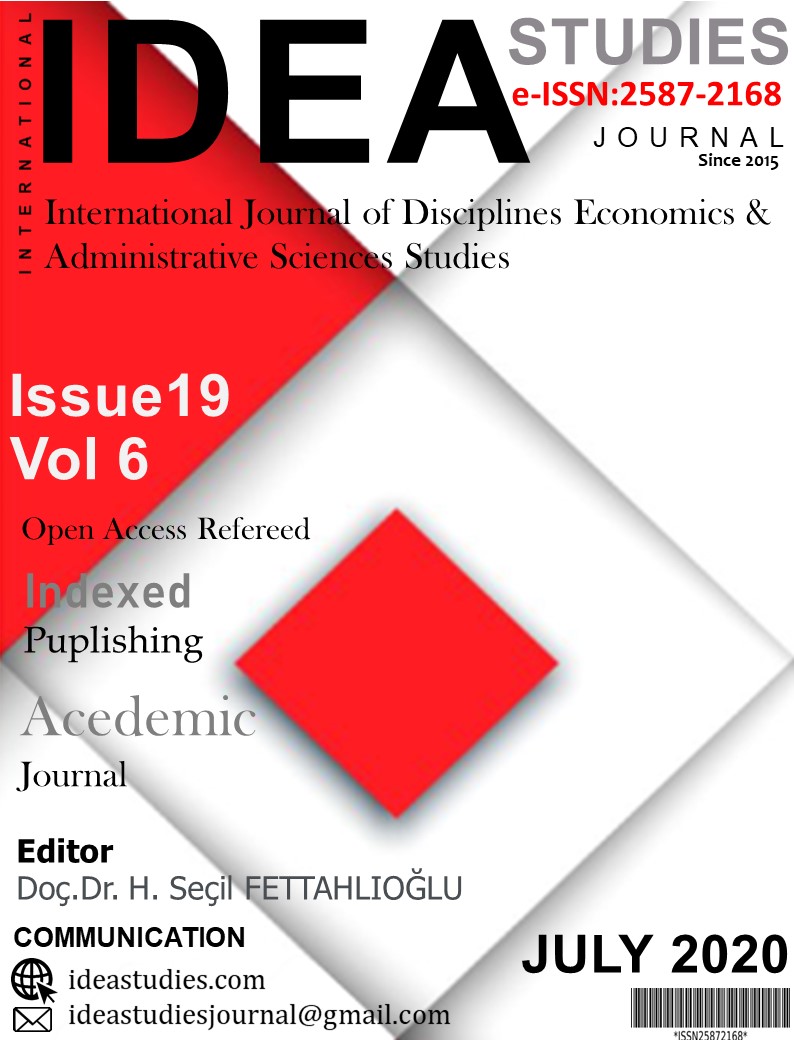Author :
Abstract
Pazarlamanın tarihsel gelişiminin incelenmesi ve aynı düşünce üzerine yakın görüşlerin toplanmış ve sınıflandırılmış olmasının üzerinden uzun bir süre geçmiştir. Son 10 yıl içerisinde bilgisayar teknolojilerinin ve internetin yaygınlaşması, pazarlamanın hızlı bir değişim süreci içerisine girmesini sağlamıştır. Pazarlamanın düşünce okulları bu değişim ve farklı görüşlerin çoğalması sebebiyle, her bir okulun ilgilendiği konularda genişleme meydana gelmiştir. Bu çalışmada, pazarlamanın düşünce okullarından, kurumsal okulun geçmişi ve gelişim sürecine değinilmektedir.
Keywords
Abstract
It has been long time since the examination of the historical development of marketing in which close perpectives on the same thought at marketing are collected and classified. Within last decade, the widespread use of computer technology and the internet has enabled marketing to enter into a rapid change process. Due to this changes and the increasing numbers of different views, topics of marketing schools of thougt has expanded.This study examines the history of institutional school of thought in marketing and it’s evolution processof historical developments.
Keywords
- Ailawadi, K. L., & Farris, P. W. (2017). Managing Multi- and Omni-Channel Distribution: Metrics
- Ailawadi, K. L., & Farris, P. W. (2017). Managing Multi- and Omni-Channel Distribution: Metrics and Research Directions. Journal of Retailing, 93:1, s. 120-135.
- Atılgan İnan, E., Akıncı, S., & Kıymalıoğlu, A. (2011). Türkiye’de Pazarlama Alanında YapılanÇalışmaların Düşünce Okullarına Göre Sınıflandırılması. Pazarlama ve Pazarlama Araştırmaları Dergisi, Sayı: 08, s. 83-104.
- Bartels, R. (1976). The History of Marketing Thought. Grid Pub: 2nd edition.Belt, J. A., & Paolilo, J. G. (1982). The Influence of Corporate Image and Specificity of CandidateQualifications on Response to Recruitment Advertisement. Journal of Management, 8:1, s. 105- 112.
- El-Ansary, A. I. (2005). Relationship Marketing Management: A School in the History of Marketing Thought. Journal of Relationship Marketing, 4:1-2, s. 43-56.
- Fombrun, C. J. (1996). Reputation: Realizing Value from the Corporate Image. Harvard Business School Press.
- Fombrun, C. J., Gardberg, N. A., & Sever, J. M. (2000). Reputation Quotient: A Multi-Stakeholder Measure of Corporate Reputation. The Journal of Brand Management, 7:4, s. 241-255.
- Houlihan, J. B. (1985). International Supply Chain Management. International Journal of Physical Distribution & Materials Management, 15:1, s. 22-38.
- Hubner, A., Wollenburg, J., & Holzapfel, A. (2016). Retail Logistics in the Transition From Multi-Channel to Omni-Channel. International Journal of Physical Distribution & Logistics Management, 46:6/7, s. 562-583.
- Hutton, J. G. (1996). Integrated Marketing Communications and the Evolution of Marketing Thought. Journal of Business Research, 37, s. 155-162.
- Innocent, O. O., & Ugochukwu, N. (2007). An Assignment On The Pioneers of Marketing Thought. Enugu Campus: University of Nigeria.
- Jones, D. B., & Monieson, D. D. (1990). Early Development of the Philosophy of Marketing Thought. Journal of Marketing, 54:1, s. 102-113.
- Jones, S., Wilikens, M., Morris, P., & Masera, M. (2000). Trust Requirements In E-Business. Communications of the ACM, 43:12, s. 81-87.
- Jones, T. C., & Riley, D. W. (1985). Using Inventory for Competitive Advantage through SupplyChain Management. International Journal of Physical Distribution & Materials Management, 15:5, s. 16-26.
- Kitchen, P. J., & Burgmann, I. (2010). Integrated Marketing Communication. John Wiley & Sons, Ltd,, s. 1-23.
- Kyasanur, P., & Vaidya, N. H. (2005). Routing and Interface Assignment in Multi-Channel Multi-Interface Wireless Networks. Wireless Communications and Networking Conference, (s. 2051- 2056). IEEE.
- Langdon, C. S., & Shaw, M. J. (2000). The Online Retailing Challenge: Forward Integration and E- Backend Development. ECIS 2000 Proceedings. 199., s. 1-5.
- Maister, D. H. (1978). Centralisation of Inventories and the"Square Root Law". International Journal of Physical Distribution, 6:3, s. 124-134.
- Morris, M., Schindehutte, M., & Allen, J. (2005). The Entrepreneur's Business Model: Toward a Unified Perspective. Journal of business research, 58:6, s. 726-735.
- Omotoyinbo, C. A., & Oladele, I. O. (2017). Application of the Marketing School of Thought andTheir Implications in Nigeria Market: A Study of Music Industry. Journal of Marketing Management and Consumer Behavior, 2:1, s. 1-27.
- Osterwalder, A., & Pigneur, Y. (2002). An eBusiness Model Ontology for Modeling eBusiness. Bled 2002 Proceedings, 2, (s. 75-91).
- Pickton, D., & Broderick, A. (2001). Integrated Marketing Communications. London: Prentice Hall.
- Porter, M. E. (1985). Competitive Advantage: Creating and Sustaining Superior Performance. New York: Free Press.
- Power, T. L. (2012). Early schools of marketing thought and marketplace evolution. Journal of Historical Research in Marketing, 4:1, s. 190-206.
- Schultz, D. E. (1992). Integrated Marketing Communications. Journal of Promotion Management, 1:1, s. 99-104.
- Shaw, E. H., & Jones, D. B. (2005). A history of schools of marketing thought. Marketing Theory, 5(3), s. 239-281.
- Sheth, J. N., & Gardner, D. M. (1982). History of marketing thought: an update. College ofCommerce and Business Administration, Bureau of Economic and Business Research: University of Illinois at Urbana-Champaign.
- Sheth, J. N., Gardner, D. M., & Garrett, D. E. (1988). Marketing Theory: Evolution and Evalution. John Wiley & Sons: New York.
- So, J., & Vaidya, N. H. (2004). Multi-Channel MAC for Ad Hoc Networks: Handling Multi-Channel Hidden Terminals Using A Single Transceiver. In Proceedings of the 5th ACM international symposium on Mobile ad hoc networking and computing, (s. 222-233).
- Talarzyk, W. W., & Widing, R. E. (1994). Direct Marketing and Online Consumer Information Services: Implications and Challenges. Journal of Interactive Marketing, 8:4, s. 6-17.
- Tvede, L., & Ohnemus, P. (2001). Marketing Strategies for the New Economy. UK: Wiley Chichester.
- Verhoef, P. C., Kannan, P. K., & Inman, J. J. (2015). From Multi-Channel Retailing to Omni-Channel Retailing Introduction to the Special Issue on Multi-Channel Retailing. Journal of Retailing, 91:2, s. 174-181.
- Wu, Y., Stankovic, J. A., He, T., & Lin, S. (2008). Realistic and Efficient Multi-ChannelCommunications in Wireless Sensor Networks. The 27th Conference on Computer Communications. (s. 1193-1201). IEEE.
- Zott, C., Amit, R., & Massa, L. (2011). The Business Model: Recent Developments and Future Research. Journal of management, 37:4, s. 1019-1042.





